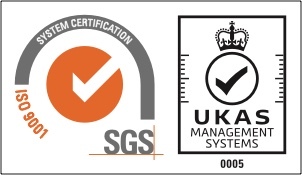
Adapting Your Leadership Style To The Situation
Versatile leaders are hard to come by. They’re not just hard to come by but they’re an incredible asset to any business. There are some that are experts at taking an idea to market, some that are great at working with businesses that are in a recovery stage and there are of course those that strive in an environment that commands rapid growth. Despite expertise in what leaders do, how they do it is in many ways more important.
Styles Of Leadership
Every leader has different characteristics, it’s part of what makes being a leader so difficult, but there are models and tools that can help by providing insights into how to deal with certain situations. The Situational Leadership® model, developed by Dr Paul Hersey from the Center for Leadership Studies, looks at the relationship between leaders and followers. It gives leaders a way to identify the best-suited style to adopt based to the situation “ in the moment ” and the follower’s readiness to undertake a specific task. It is arguably the most recognised, utilised and effective leadership and influence tool in the history of the behavioural sciences.
There are four leadership styles which a leader can adopt based on any given situation:
Style 1 - Telling - In this style, a leader defines the tasks and closely supervises their followers. This particular style is useful when the follower is inexperienced and has a low readiness to undertake a task.
Style 2 - Selling - This style is useful when tackling situations whereby the individual may not possess the capability to complete a task, however, is willing to give it a go. The most appropriate style to adopt in this instance is to provide an explanation and coach the individual into what you believe to be the right way of completing a task.
Style 3 - Participating - In a situation where an individual possesses the ability to complete a task but is unwilling or insecure in the situation, it’s argued that the best style to adopt here, is one whereby as a leader, participation is encouraged to complete the task.
Style 4 - Delegating - This style is useful whereas a leader you feel confident that the follower is both able and willing to complete a task. This style is most suited to an experienced employee who has the competence to set their own processes required to accomplishing certain tasks.
There are two crucial factors in The Situational Leadership® model that should never be overlooked;
- Successful leaders shouldn’t have one style or one predominant approach to leadership and the situation should dictate the style “ in the moment “
- The model is fluid and leaders should quickly identify the follower’s performance readiness for each new task.
The importance of adapting your style to the situation
At its core, leadership is influence and being able to change your style in order to influence is crucial in being a successful leader. Poor leadership and success are mutually exclusive so for a leader, and consequently a business or organisation to be successful, they need to be able to adapt.
Adapting Your Style To The Situation
- Recognising the situation
being able to identify the situation and understanding the impact this may have on your teams’ readiness is crucial.
- Selecting a style
With the aforementioned information and a clear mind, this stage is critical. Understanding the situation will help you to choose the style to adopt that will help deliver the best results.
- Implementing it
You understand what’s happening, you know what needs doing and you know the style which best compliments the situation. Now it’s time to get the wheels in motion and start to lead!
If only it was that simple?! A logical path is a good way to be a great leader but it might not come naturally. That’s why we work closely with leaders in order to train leaders in Situational Leadership®. Find out more about Situational Leadership® Building Leaders here.






